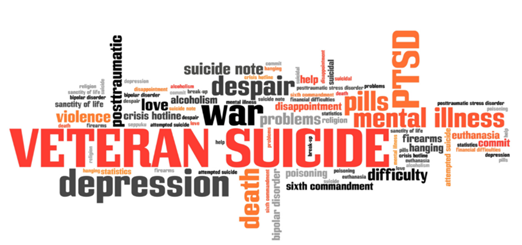
From a military perspective, America’s longest war ended August 30, 2021, when the final Air Force transport plane left the Kabul airport runway with the last remaining troop contingent. While post-mission work will continue for some time in the wake of a chaotic exit, the nation now faces a period of reflection as the end result of the 20-year Global War on Terrorism is weighed against the enormous sacrifice of life and the stunning financial investments made.
Most telling in this period of reflection is the sobering fact that over 30,000 active duty service members and veterans who served in the wars and deployments following the 9/11 terror attacks are estimated to have died by suicide. The U.S. Department of Veterans Affairs reports in its 2020 National Suicide Prevention Annual Report that 17.6 veterans take their own lives each day, a rate that has grown six percent since measurement began shortly after 9/11. Boston University’s Cost of War Research Series, in their recent “High Suicide Rates among United States Service Members and Veterans of the Post-9/11 War,” put it succinctly with this closing comment: That is a cost of war we cannot accept.
What’s Driving This Tragic Situation?
Historically, the rate of suicides across the veteran population mirrored that of the U.S. population, where the suicide rate statistically coincided with the overall growth in population. With respect to the veteran community, however, a much different picture has emerged over the past two decades. For veterans, the overall rate of suicide has grown despite a steady decrease in the size of the veteran population.
The Boston University study shines an intense light on the unique characteristics of the Global War on Terror and how these distinctions, some of which are similar to the Vietnam War, might appear to lead to suicidal tendencies among those engaged in the military. Specifically, the study notes that “Active service member suicide rates have grown during the Global War on Terror to surpass any service member suicide rates since before World War II.”
So, what are the differences? Here’s where public perceptions come into play. Both the Vietnam War and the war in Afghanistan have been branded by public skepticism and either an attitude of disapproval—as in the Vietnam War—or indifference—as in the case of the Global War on Terrorism in its waning years. WW II veterans returned to an endearing public and a national sense of patriotism, while Vietnam and Afghanistan veterans face a public often dubious regarding the merits of the conflicts in which they served.
There can be no question that public perception affects the mental attitude of military veterans, in many cases turning a sense of pride in service into a loss of purpose and a questioning of the enduring value of their service. The consequence can be a sense of despair that adds to the level of post-traumatic stress analogous to war zone combat, resulting in elevated suicidal tendencies.
Of course, there are other factors that differentiate the war scene of the past two decades from earlier history. Among these are the sheer length of the Global War on Terror, which until just now has been referred to as America’s “never-ending war,” the differences in combat associated with the menace of new and more diabolical war tools like improvised explosive devices (IEDs) and the corresponding rise in traumatic brain injuries (TBIs), and the advances in medical treatment allowing for extended duty tours, to cite a few.
The Road Forward
Stemming the tide of veteran suicide is a complex undertaking. While that certainly is an understatement, it’s widely recognized—by the Veterans Health Administration and others—that the pathway to battling this epidemic lies in local, regional, and national efforts to implement a public health approach to end veteran suicide. Through a combination of clinical and community interventions aimed at identifying best suicide prevention care practices, advancing the appropriate clinical practices to deal with veterans’ needs, and promoting cross-agency collaborations and community partnerships designed to engage many parties in addressing the problem, the approach represents a broad undertaking.
The Association of Mature American Citizens (AMAC), through its non-profit AMAC Action and AMAC Foundation entities, is proud to be playing a role in this community intervention process. Both of these AMAC affiliates have taken an aggressive stance in promoting awareness of the veteran suicide epidemic, with many news releases and general articles addressing the issue. Included in these efforts has been the assembly of components of AMAC’s Veterans 2021 Initiative launched last year, most notably the creation of an online, searchable database of programs, services, and general information of importance to the veteran community and the initial steps toward what will be a networking initiative among key Veteran Services Organizations (VSOs) serving the needs veterans.
American Legion national commander Paul E. Dillard, in describing his theme for 2021-2022 of “No Veteran Left Behind,” provided this message “There are many consequences for a veteran who is left behind, Isolation, denied benefits, lost opportunity, lack of decent housing or employment are just a few. But the most tragic outcome for a veteran left behind is suicide.”
Aside from the sheer loss of American treasure, veteran suicide is indeed a cost of war we cannot accept.
Subscribe
Sign Up for Our E-Newsletter!
Stay up-to-date on all of the topics you care about by subscribing to our quarterly newsletter emailed directly to your inbox!
SubscribeSubscribe
Sign Up for Our E-Newsletter!
Stay up-to-date on all of the topics you care about by subscribing to our quarterly newsletter emailed directly to your inbox!
Subscribe